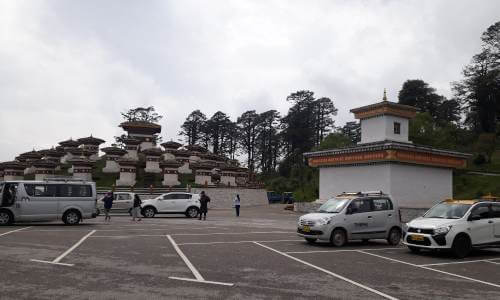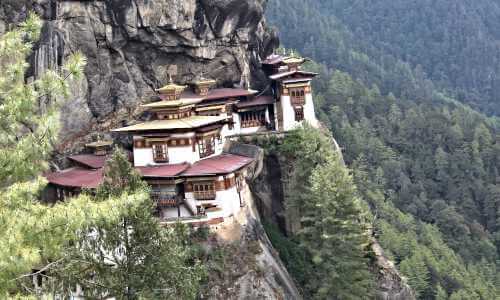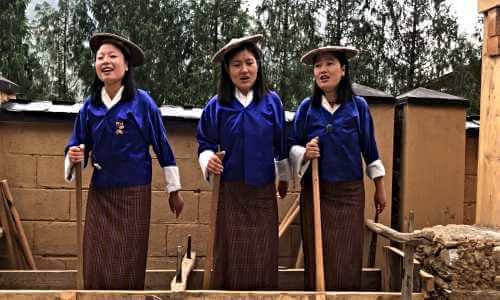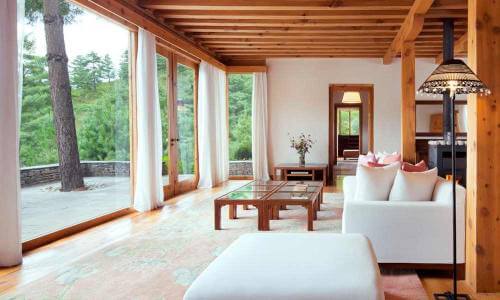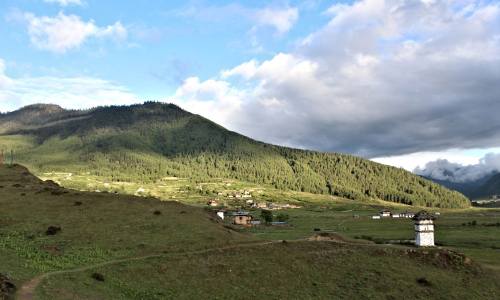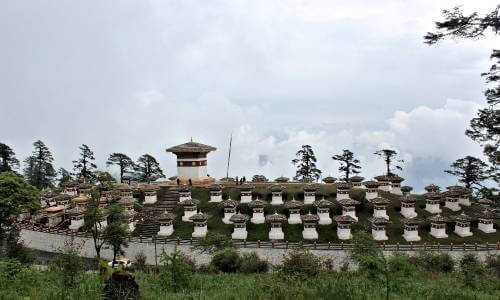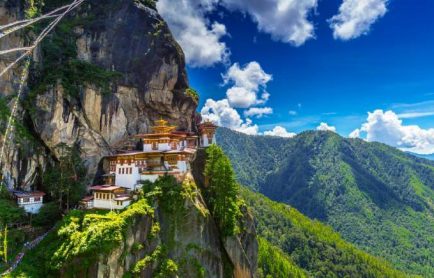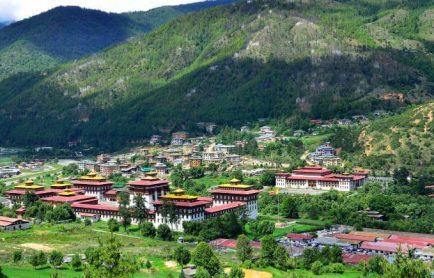Dochula
Visitors to Bhutan should never miss out visiting the Dochula Pass. It is a magnificent pass that cuts through the snow covered Himalayas on the road which connects Thimphu to Punakha. The pass is dotted with several memorable landmarks, one of the most famous of which is the Druk Wangyal Khang Zhang Chortens. The pass also enjoys an immense popularity with the tourists since it provides a 360 degree view of the Himalayas. On days when the weather is clear, the view is one that easily wins your heart.
The Dochula Pass also impresses everybody with its impressive size, as it enjoys an elevation of 3,100 meters approx. Enormous snow capped Himalayan peaks can be viewed on the eastern end. Among the most famous of these is Mt. Masanggang, which reaches the skies at a height of almost 7158 meters.
Because of its immense altitude, the weather at the Dochula Pass remains foggy throughout the year. Visit it between the months of February and October, and you will be treated to breathtaking views of the Bhutan Himalayas. Lovely forest covers embrace the passes, while the hill slopes surrounding it are marked by colourful religious flags which are holy to the Buddhists. Visit it during February, after the end of the Losar Festival, and the Dochula Pass presents a colourful spectacle of different flowers. During the month of March, rhododendrons are in full bloom.
While visiting Dochula Pass during the course of your Bhutan sightseeing tour, you should also visit the three famous landmarks dotting it. One of these is 108 Druk Wangyal Khang Zhang Chortens or stupas. In the local language, they are called chortens of victory, since they were built to honour those Bhutanese soldiers who lost their lives during the fight against insurgents. It also marks the victory of King Jigme Wangchuk who forced the insurgents to abandon their camps and flee the country.
The other famous landmark, Druk Wangyal Lhakhang, was built and completed in 2008 to celebrate 100 years of monarchy in Bhutan. The walls are a particular fascination, as they are adorned with paintings on Bhutanese history.
The third landmark is the Royal Botanical Park, which is home to 46 species of rhododendrons. While 18 of these belong originally to the park, 26 of them have been brought from several places in Bhutan.
